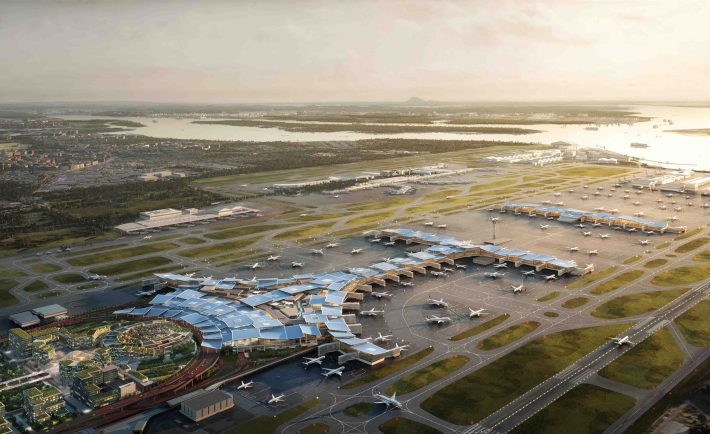After years of anticipation, Singapore is officially building the next chapter of its aviation story. On May 14, Prime Minister Lawrence Wong broke ground on Changi Airport Terminal 5 (T5), a major expansion project that will transform the region’s air travel landscape and strengthen Changi’s position as a global hub for years to come.
First unveiled in 2013, T5 is a joint effort by the Ministry of Transport (MOT), the Civil Aviation Authority of Singapore (CAAS), and Changi Airport Group (CAG). Now, more than a decade later and following a delay caused by the Covid-19 pandemic, construction is finally underway.
TERMINAL BUILT FOR THE FUTURE
Spanning a massive 1,080 hectares, Terminal 5 will nearly double the airport’s total footprint. When completed in the mid-2030s, it will raise Changi’s passenger capacity from 90 million to an impressive 140 million annually.
Changi served 67.7 million passengers in 2024 and recently earned the title of Skytrax’s “World’s Best Airport” for the 13th time in 2025. With T5, Singapore is aiming to lead the future of aviation.
So, why now? As PM Wong explained, the Asia-Pacific region is set to see rapid growth in air travel over the next two decades. This surge is driven by a rising middle class and increasing urbanization. By 2043, Asian airports will need to support nearly twice as many passengers and aircraft, putting pressure on existing infrastructure.
SMART AND SUSTAINABLE
T5 isn’t just big; it’s smart. The terminal will feature advanced technology and automation to improve operations and enhance the passenger experience.
Look out for baggage robots that function in all weather, AI-powered video analytics to monitor aircraft turnaround times, and a fully automated people-mover system. Everything is designed to keep things smooth and efficient.
Design-wise, T5 will reflect Singapore’s signature mix of urban charm and greenery. Curved roofs of varying heights will let natural light in, while landscaped spaces will create an uplifting vibe that is true to the Changi spirit.
HUB FOR THE WORLD
When it opens, Singapore Airlines (SIA) and its budget arm Scoot will operate under one roof at T5. Currently spread across Terminals 1, 2, and 3, the move will improve efficiency and provide space for future growth.
CAG says there will also be room for other airlines to grow, though it’s still too early to say which carriers will shift to T5.

Image Credits: facebook.com/changiairport
Right now, Changi connects Singapore to over 170 cities. With T5, that number is expected to grow to more than 200 by the mid-2030s, boosting Singapore’s role as a global air hub in the competitive landscape.
LIFTING TOURISM TO NEW HEIGHTS
In 2024, the country recorded $29.8 billion in tourism receipts and aims to further that number. The impact of T5 supports Singapore’s long-term tourism ambitions. With stronger connectivity and more visitors, the goal is to reach $47 billion to $50 billion annually within the next 15 years.
WHAT’S NEXT?
According to Mr Ong Chee Chiau, CAG’s managing director for Changi East, construction will ramp up in the next few years and peak around 2029. Several key features like a new third runway, a vehicular underpass, and baggage tunnels, are already completed.
With the skies opening wider, Singapore is ready to soar with its larger, smarter, and greener gateway.



